Careful garden planning can help you fit a lot of plants into a small space garden. But one often overlooked aspect of garden planning is time.

Not all vegetable plants mature at once, and different vegetables are harvested at different times of the season. If you only plant crops like cilantro or dill in spring, they will bolt long before fall, and you won’t have any fresh herbs to cook with by the end of the growing season!
Succession planting can ensure you have vegetables, flowers, and herbs all season long. By planting seeds throughout the growing season, you can extend your harvest and get even more fresh veggies out of a small space garden. Including succession planting in your overall garden plan is a smart way to maximize space and work with crops that have particular temperature requirements too.
In the list below, you’ll discover some of the top vegetables, flowers, and herbs to grow with succession planting. Some of these crops are best planted in spring and autumn, while others can be sown throughout the entire growing season.
Jump to:
18 top crops to succession plant for an extended harvest
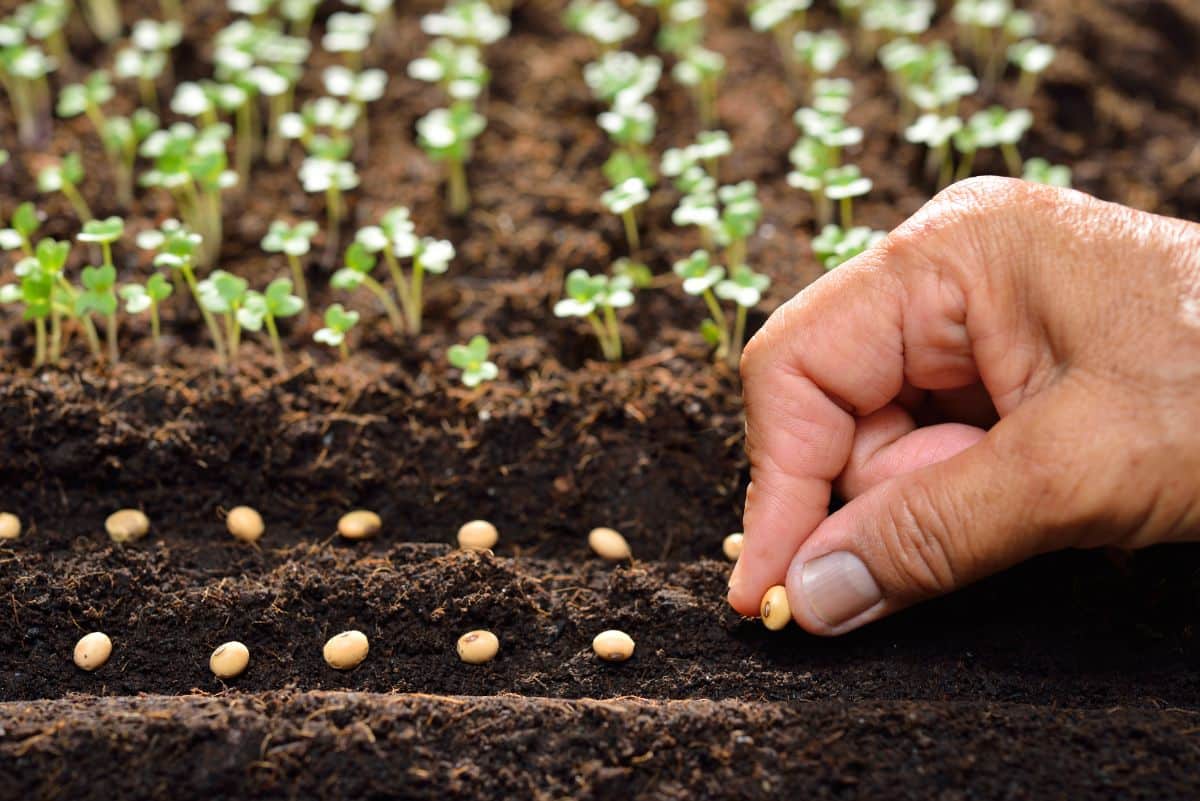
From vegetables to herbs, there are a lot of fast-growing plants that work well with succession planting. Sowing these plants as seeds directly in your garden is one way to keep your harvest going. You can also extend your harvest by succession planting heat-sensitive seeds indoors in summer and moving them outside later in the season.
1. Leafy greens

Leafy greens are one of the most obvious choices for succession planting as they are fast-growing plants and quite compact. Sowing leafy greens throughout the season can be an easy way to use up available gardening space and fill in areas where other crops have been harvested. Sowing leafy greens often will also provide you with a ready source of baby greens for fresh salads, as well as larger leaves for cooking.
Many leafy vegetables, like spinach, bolt in the heat and can become bitter and unpleasant to eat as soon as temperatures begin to rise. Sowing multiple crops of these plants in short succession can lengthen your harvesting window and keep your family eating flavorful greens all summer long.
Depending on the types of greens you’re growing, seeds can be sown at 1 to 3-week intervals until about 4 weeks before your first frost date. Fast growers, like baby greens, are usually sown once a week, while larger plants, such as Swiss chard, can be sown every 3 or 4 weeks for a continual harvest.
Some of the best leafy vegetables for succession planting include:
- Spinach
- Bok choy
- Swiss chard
- Kale
- Collard greens
- Endives
- Arugula
- Escarole
- Mizuna
- Baby greens
2. Radishes

When spring finally arrives, it can be a rush to get all your seeds in the garden, and ambitious gardeners often plant more seeds than they can use. This can be particularly true with radishes, which are one of the first plants to mature in spring.
If you planted too many radishes early in the season, it can be difficult to use them all in time, and radishes left too long in the garden can become woody. But if you stagger your radish planting out, you can have just the right amount of radishes when you want them.
Radish seeds can be succession planted every 1 to 2 weeks throughout the season until 4 weeks before your first frost date. Consider how many radishes you and your family eat per week to determine how many seeds to sow at each planting.
3. Lettuce
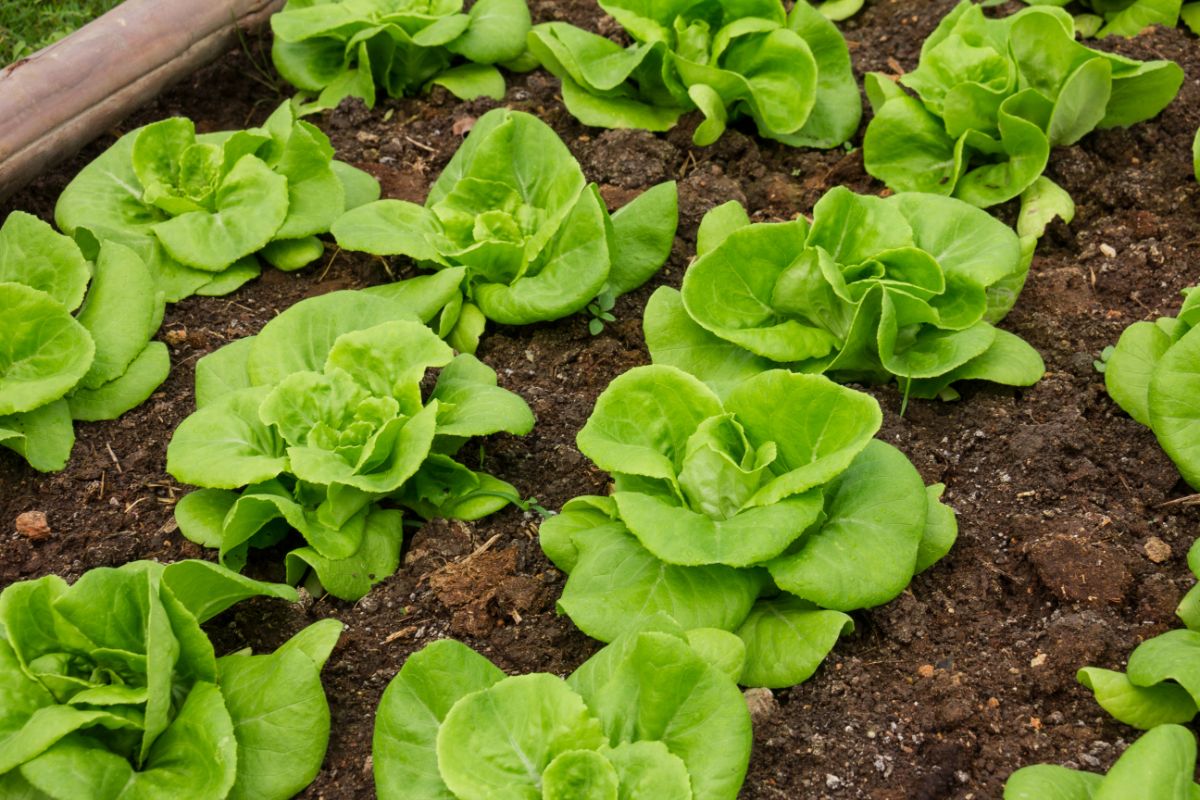
Like leafy greens, lettuce matures quickly, and most varieties will bolt in the heat. Succession planting lettuce throughout the growing season will provide you with fresh salads for spring, summer, and fall. You can also grow lots of baby greens with succession planting.
For baby greens, succession plant lettuce seeds every 7 to 10 days. Heading and larger lettuce varieties take longer to grow, so sow them every 10 to 14 days. Choosing bolt-resistant lettuce types, like ‘New Red Fire,’ can also keep your plants productive well into summer.
4. Carrots

Carrots are always a refreshing garden treat, but if you don’t succession sow them, your carrot crop will run out long before fall. With succession planting, you can provide your family with fresh carrots all season long, as well as storage carrots for cozy winter meals.
Fresh-eating carrots can be sown every 3 weeks from the time the soil is first workable in spring until mid-July. In mid-July, sow a crop or two of larger storage carrots, which will last longer in root cellars.
5. Cilantro
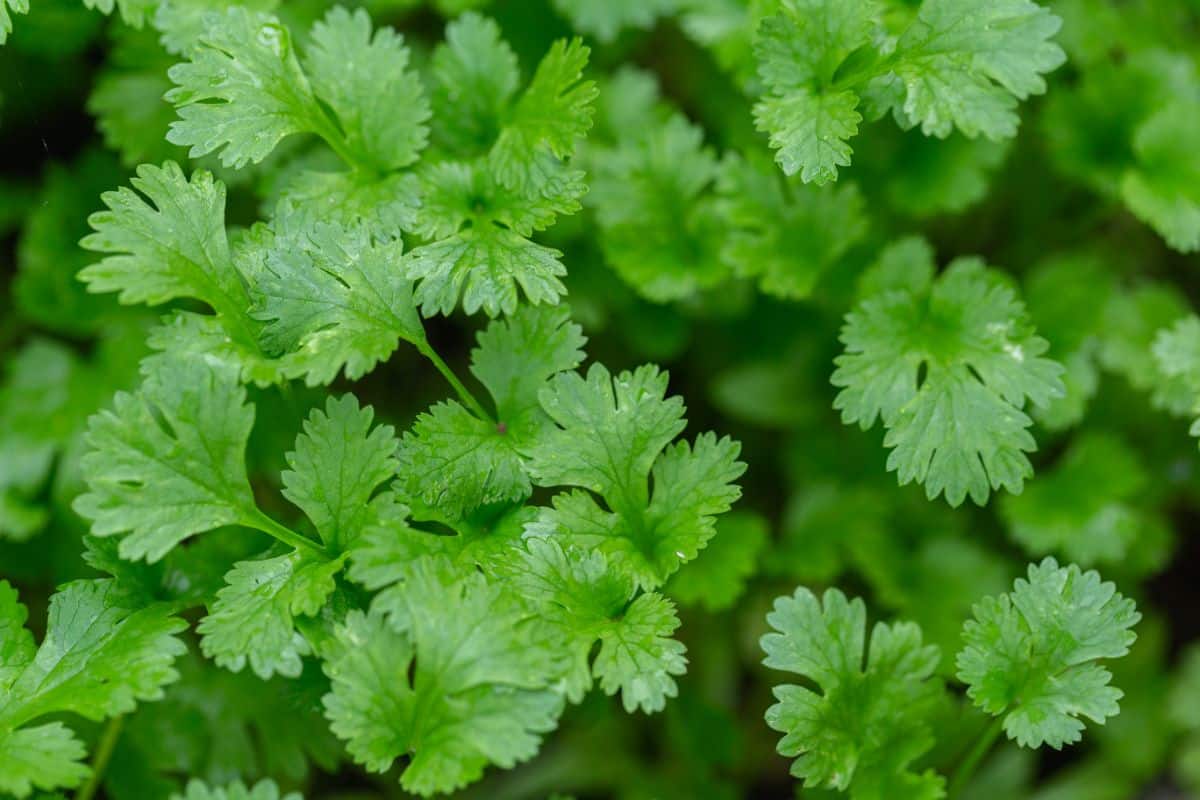
Cilantro is a cool-weather herb that bolts and turns bitter in the summer. But you can keep your cilantro harvest going by continuously sowing cilantro seeds every 2 to 4 weeks from spring to early summer. After temperatures begin to cool, sow an additional crop of cilantro in early fall for a late-season harvest.
Beyond succession planting, you can extend the life of your cilantro plants by choosing cultivars that are slower to bolt. Keeping your plants well-watered and sowing them in an area of your garden that receives a bit of afternoon shade can also slow down the bolting process and keep your herbs edible for longer.
6. Cucumbers
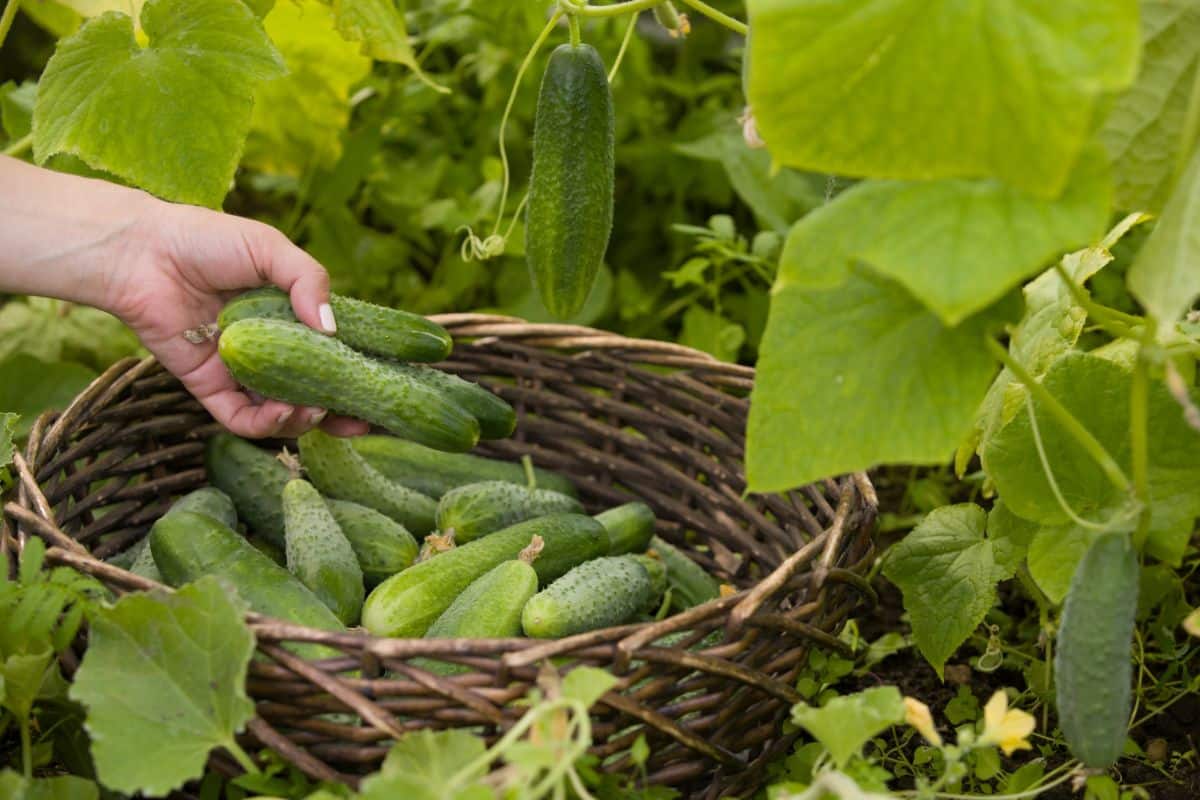
Gardeners often sow cucumber seeds once during the season, but if you succession plant your seeds, you can get a lot more cucumbers for pickling, fresh eating, and preserves. This will make the canning process feel less rushed. Staggering your plantings may also help some of your crops better resist temperature extremes or pest predation.
Cucumber seeds can be succession planted at 3-week intervals until 6 weeks before your first frost date.
7. Beans
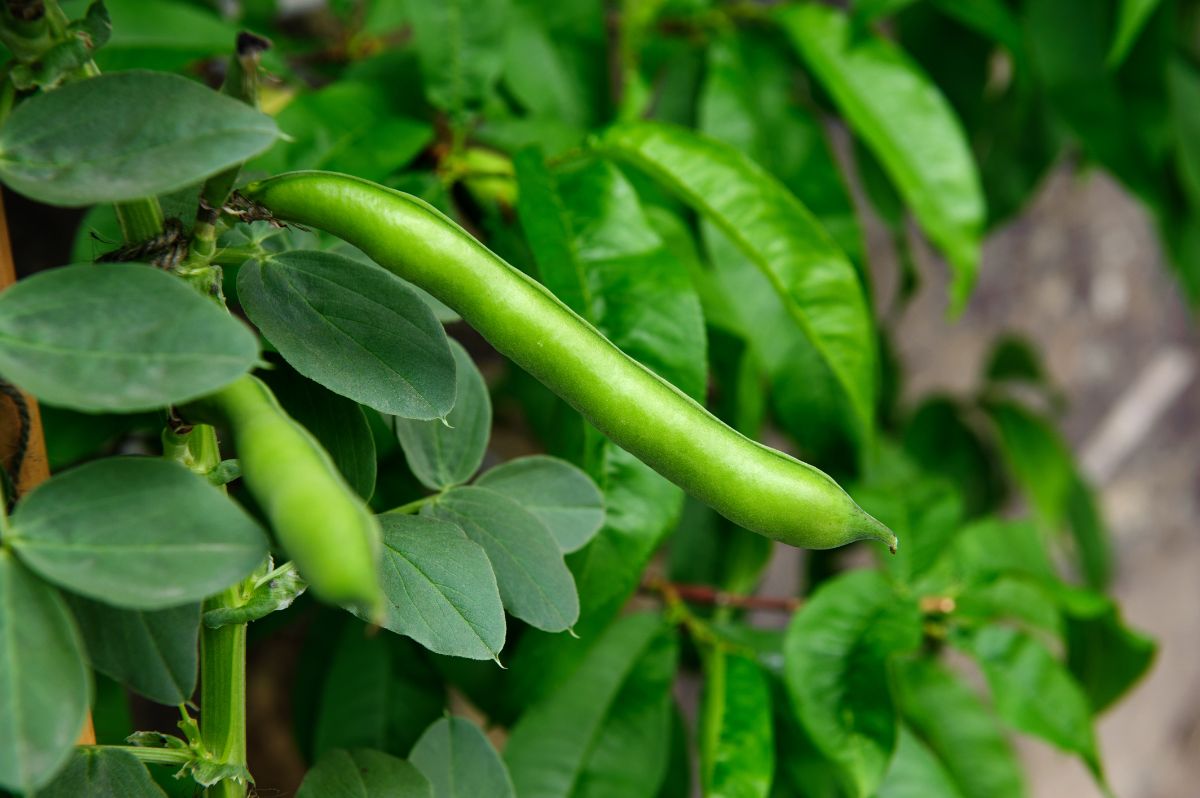
When it’s time to harvest beans, you’ll often get baskets full of fresh beans all at once, and then your plants are finished producing for the season. This is especially true if you’re keeping bush beans, which tend to produce ripe beans in a short period of time. However, if you succession plant beans, you can get more produce and stagger your harvest so you don’t get overwhelmed with too many beans on a single day.
Bush bean seeds can be succession sown every 10 to 14 days until mid-July or approximately 8 weeks before your first frost date. Pole or vining beans may not benefit from succession sowing as they naturally have a longer harvest window.
8. Turnips
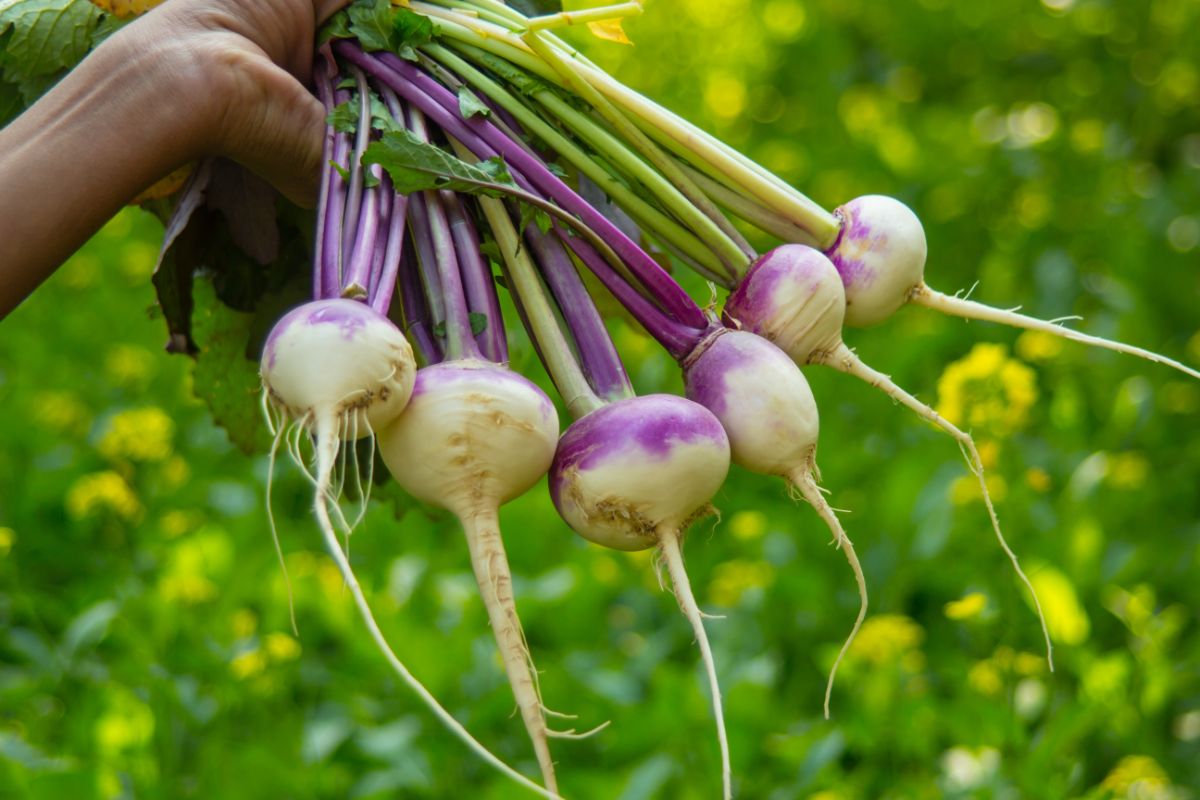
Like carrots and radishes, turnips are often planted in spring gardens, but if you just do one sowing, you may not have any turnips left when fall arrives. These plants do well with succession sowing, and growing a continual harvest of turnips can provide you with lots of turnip greens in addition to tasty roots!
Turnips can be planted in spring as soon as the soil is workable. After that, succession plant turnip seeds every 2 to 4 weeks throughout the growing season. Sow your last crops of turnips about 6 weeks before your first frost date to give your plants enough time to grow before winter sets in.
9. Kohlrabi
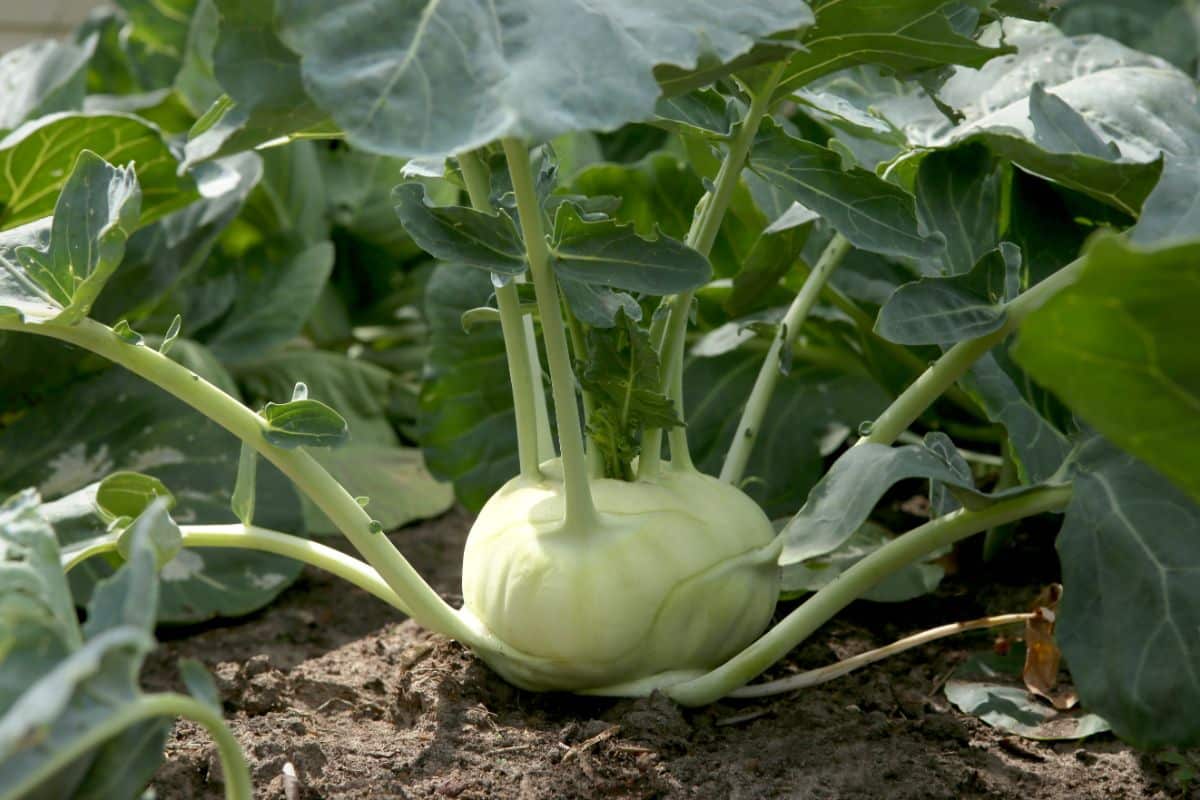
Kohlrabi is a less commonly grown vegetable, but it is no less delicious. Young greens can be steamed, sauteed, or eaten raw in salads, while the chunky root is perfect for homemade slaw and a variety of cooked dishes.
One of the challenges with keeping kohlrabi is that the stems can become overly woody in hot weather. But succession planting can provide you with a luscious crop of kohlrabi whenever you want it. For best results, sow kohlrabi seeds at 2-week intervals until 6 weeks before your first frost date.
10. Dill
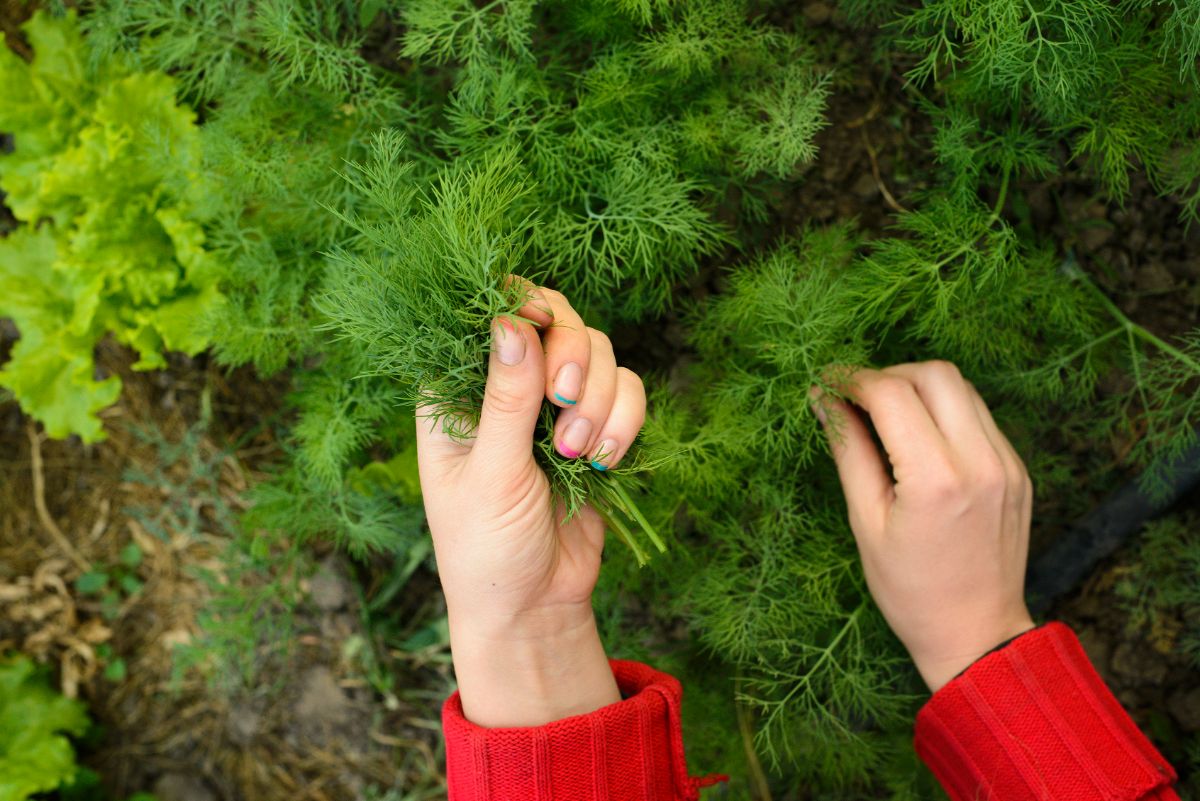
Like cilantro, dill can be a difficult herb to grow because it does not do well in the heat. At the first hint of hot weather, dill often produces flowers, and its flavor begins to change. Growing multiple crops of dill can help you avoid this issue, and it will ensure you have plenty of dill for pickle-making and other canned goods.
Dill seeds should be succession planted every 2 weeks from spring until early summer. Sow seeds again in early fall for a fresh crop of dill in autumn. Frequent watering and growing dill in the part shade can also slow down the bolting process and extend your dill harvest.
11. Summer squash
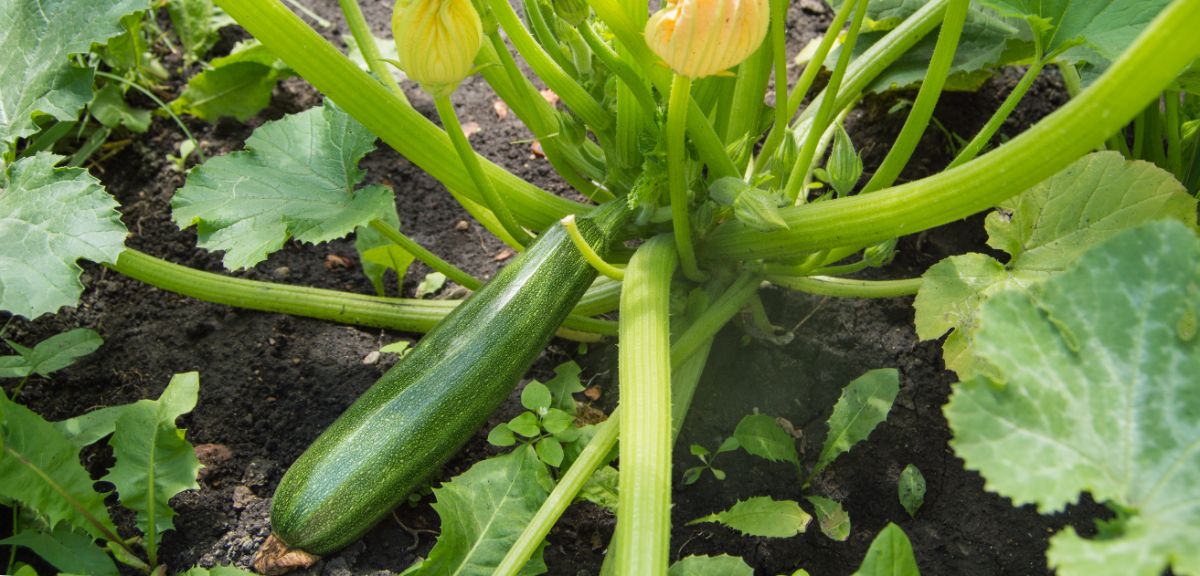
Summer squash and zucchinis are also excellent candidates for succession planting. As any gardener knows, these plants generally produce a lot of their harvest all at once. However, if you’d like to keep producing fresh squash for longer or you want to stagger out your planting to make harvesting easier, succession planting is the way to do it.
Summer squash seeds are usually planted outdoors in spring once the danger of frost has passed. About 30 days after your initial planting, sow a second crop of summer squash. Depending on your growing zone, you can continue to sow summer squash seeds at 30-day intervals until 8 weeks before your first frost date.
12. Scallions
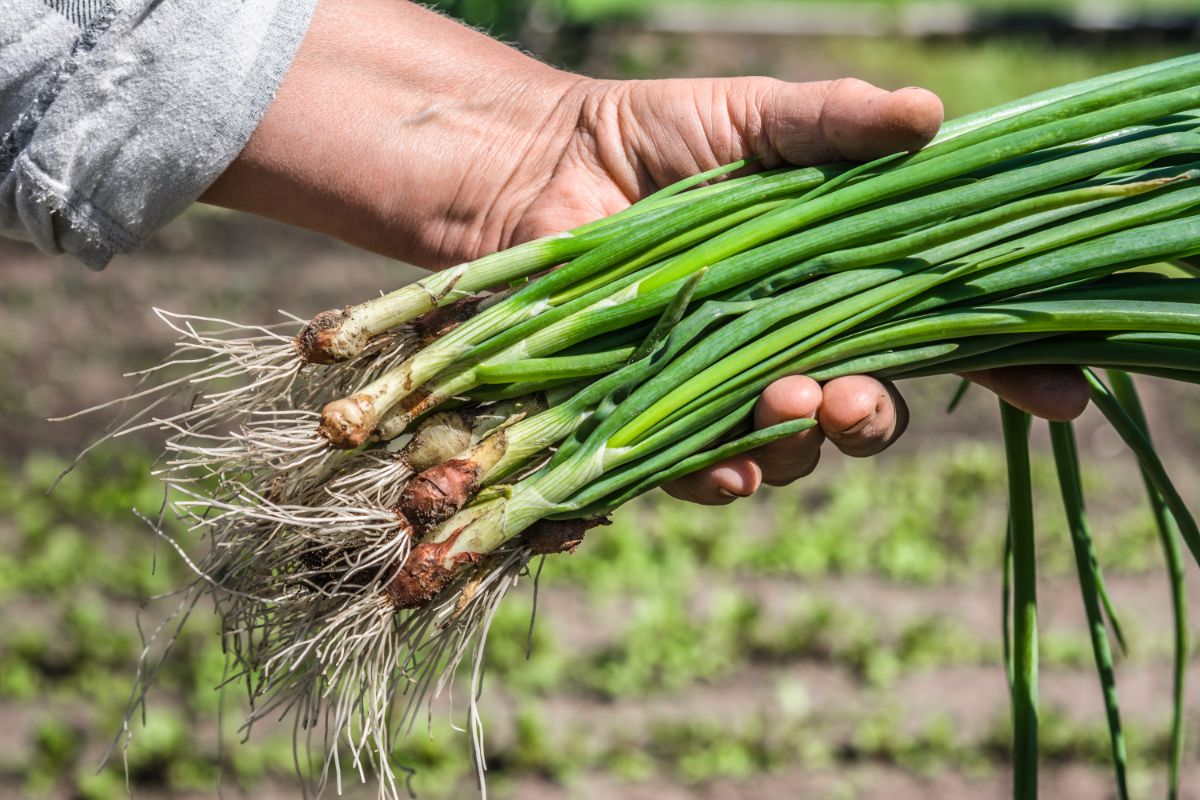
Scallions are fast-growing plants, so they are easy to grow in small spaces, and you can squeeze them in between larger veggies to use up empty garden soil. But if you want to prolong your scallion harvest and provide your kitchen with lots of tender green onions, try out succession planting.
Scallion seeds can be sown every 2 to 4 weeks from spring until the end of summer. If you choose a cold hardy scallion type, you may be able to overwinter your plants under cover for an early spring harvest.
13. Peas

Peas don’t grow well during summer, but you can cultivate a spring and fall crop of homegrown peas for soups, casseroles, and more. Succession planting peas will extend your harvest a bit longer into summer, and it will also draw out your harvest window so you won’t have to pick all of your peas at once.
Spring and fall peas can be planted about every 10 to 14 days. For an autumn harvest, sow pea seeds in late summer to early fall, and make sure all of your peas are in the ground about 8 weeks before your first frost date. This will ensure that your plants have enough time to mature before the growing season ends.
14. Basil
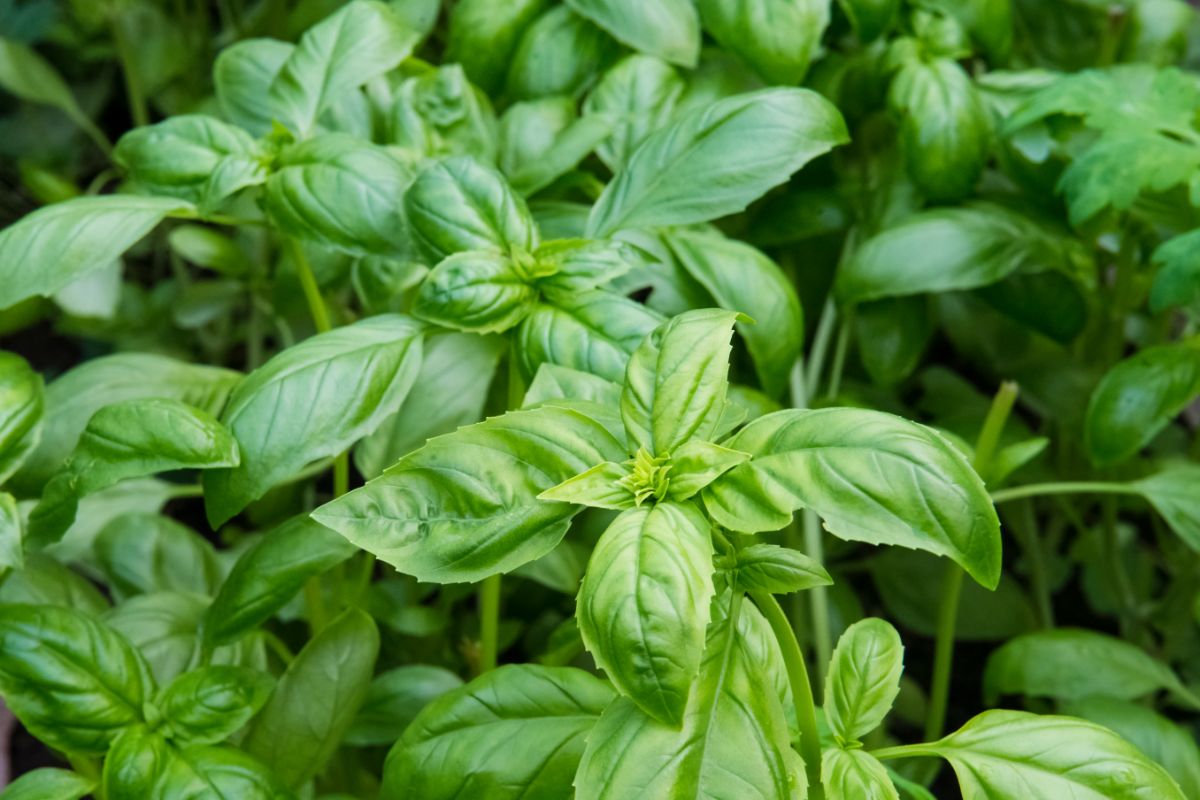
Basil can handle hot weather better than dill and cilantro, and you don’t necessarily need to succession plant it. That said, succession planting can fill in any gaps in your basil harvest and provide you with more cut herbs. Keeping several plantings of basil will also give your plants a bit more time to regrow after you harvest the first few cuttings of fresh basil leaves.
Basil can be succession planted every 2 to 3 weeks. Seeds can be directly sown, or you can start seeds indoors and transplant your new plants into your garden after they’ve produced a few sets of true leaves. Adding floating row covers over your fall crop of basil will extend the harvest season even further.
15. Shiso
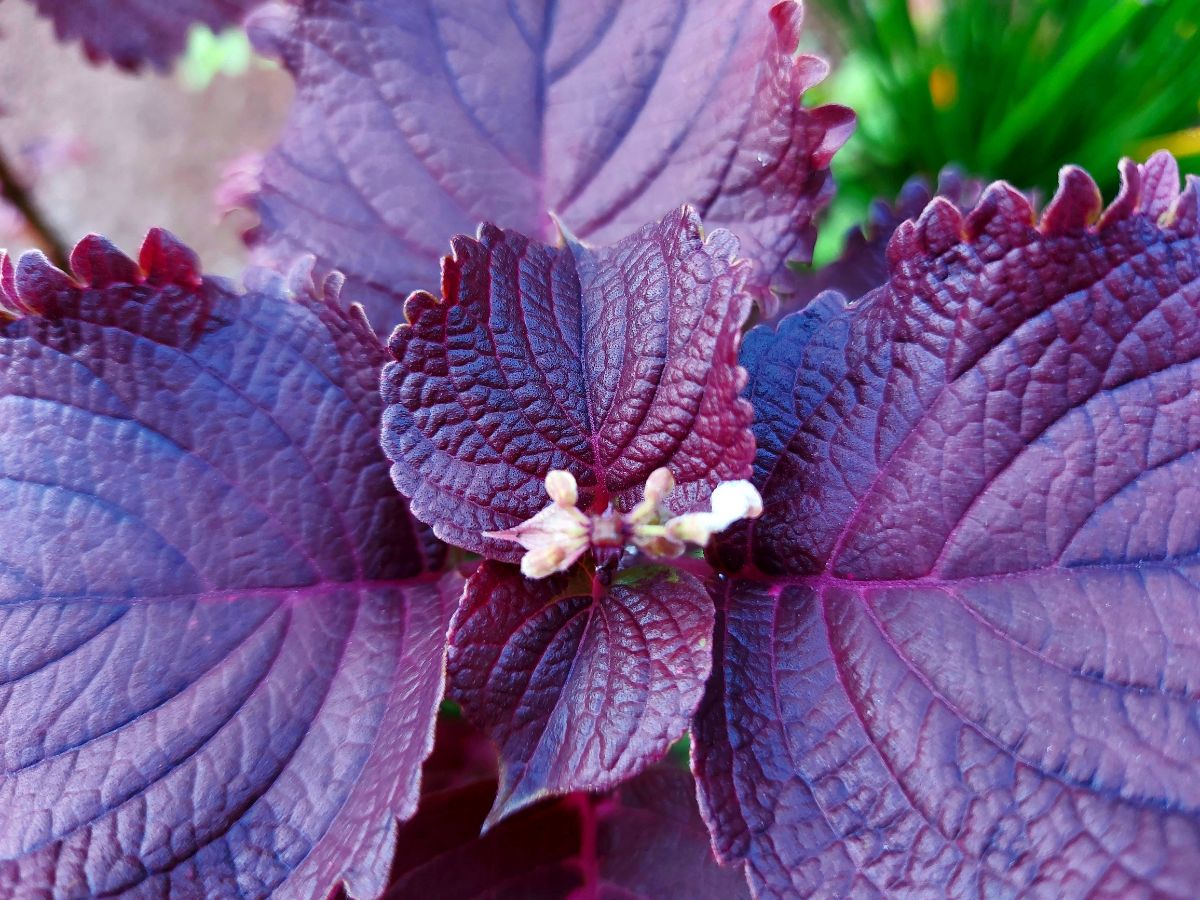
Also known as perilla, shiso is a popular ingredient in Japanese cuisine, and it’s sometimes used as a basil substitute. This plant has similar growing needs to basil, and it doesn’t strictly need to be succession planted. Growing multiple plantings of shiso will give your plants a break in between harvestings and provide you with lots more shiso to use in your favorite recipes.
Like basil, shiso grows best when succession planted every 2 to 3 weeks. Seeds can be directly sown outdoors after the last frost date of spring, with subsequent plantings occurring straight through mid-summer.
16. Melons
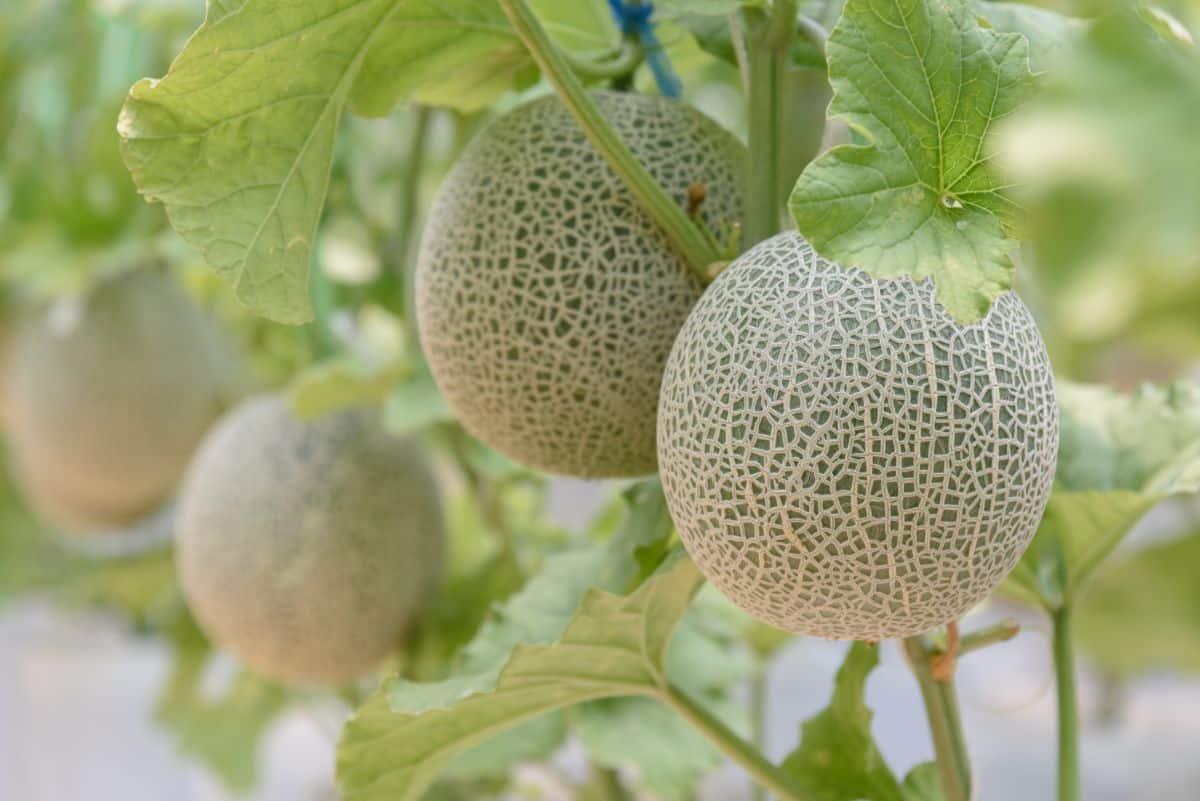
As with cucumbers and summer squash, gardeners don’t always think about succession planting melons, but this technique can help you grow more fruit. Staggering your planting is also a good way to protect your crops from pests and temperature extremes. If some plants fall victim to squash vine borers or drought, you’ll still have other plantings to depend on.
Melon seeds can be planted at 3-week intervals from after the last frost date through mid-summer. Stop planting melon seeds about 8 weeks before your first frost date and keep fall-planted melons well-watered to speed up their germination time.
17. Parsley
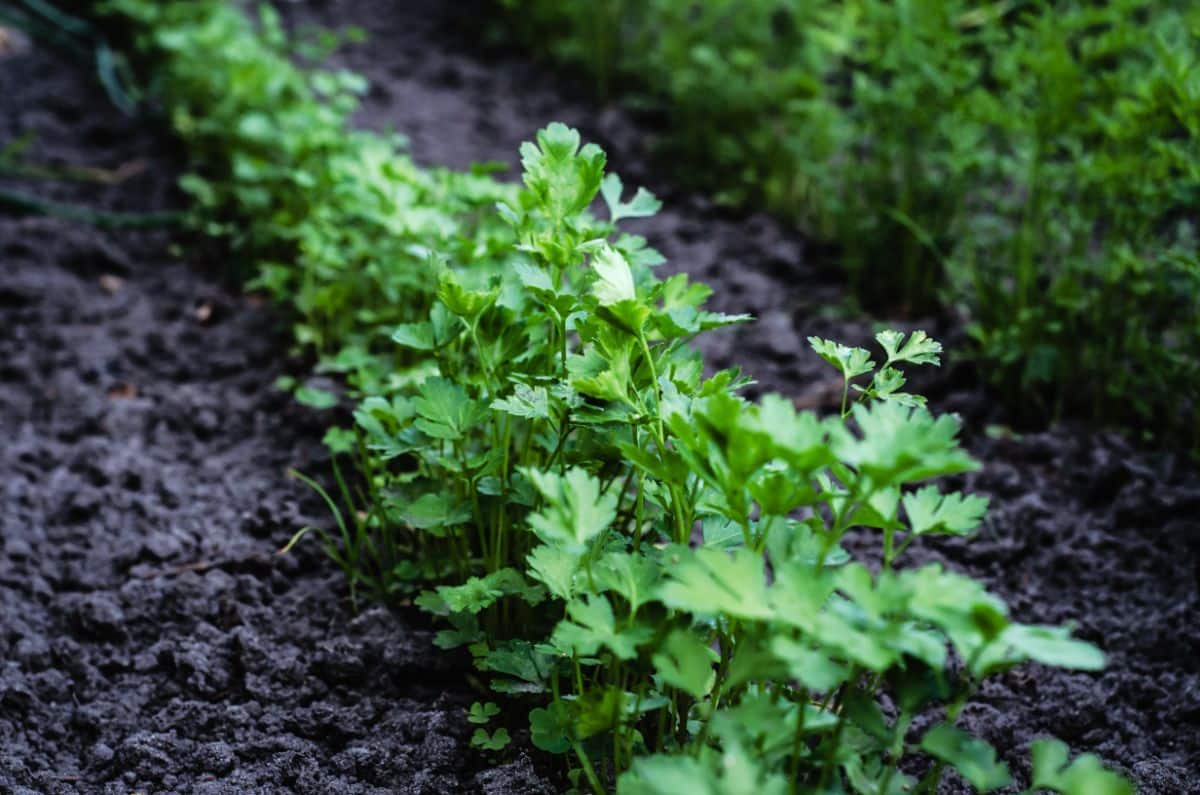
Parsley is a biennial plant, and it can handle the heat better than cilantro, but you will grow a larger harvest of parsley if you succession plant it. After harvesting your initial crop of parsley, allow your first plants to rest while you harvest new cuttings from your second crop of parsley. This will give your plants more time to regrow and provide you with all the parsley you could want.
Plant parsley every 2 to 3 weeks to keep the harvest coming!
18. Annual flowers
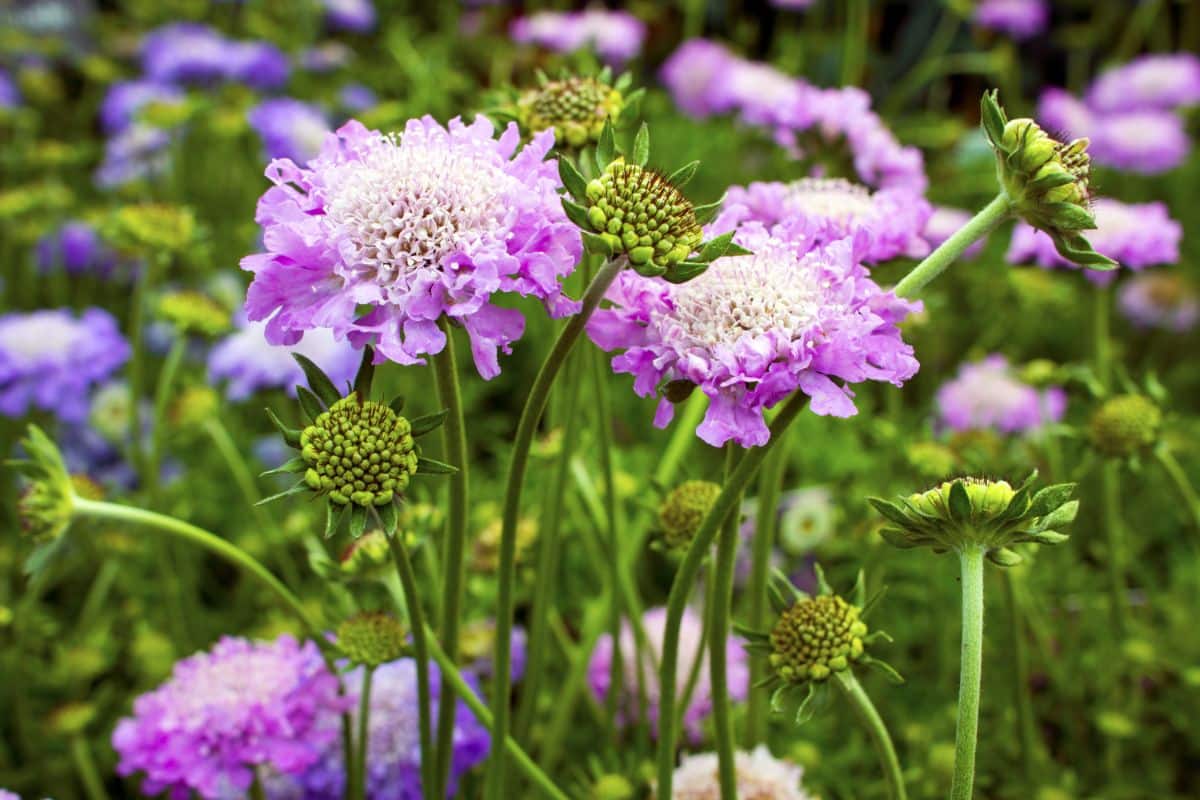
Since they come back year after year, there’s no need to succession plant perennial flowers. But if you keep annuals, you know that these short-lived plants don’t produce flowers for long. However, succession planting will extend the bloom time of your annuals and provide you with more flowers to enjoy in your garden or in homemade bouquets.
The best annual flowers for succession planting tend to be fast-growing plants that grow readily from seed. Usually, seeds are directly sown in the garden, but you can also start them indoors under grow lights.
Some of the best annual flowers for succession planting include:
- Sunflowers
- Larkspur
- Zinnias
- Cosmos
- Bachelor’s buttons
- Calendula
- Scabiosa
- Nigella
- Globe amaranth
Frequently asked questions

To succession plant fast-growing vegetables, herbs, and flowers, sow multiple plantings of your seeds every 1 to 4 weeks throughout the growing season. Alternatively, you can sow different types of plants at different times of the year in the same growing location to get more use out of your garden beds.
Fast-growing plants that germinate easily from seed are the best crops for succession planting. Plants that don’t tolerate heat well or that turn woody when left too long in the garden can also be great choices for succession planting. Some of the best crops to try include carrots, radishes, lettuce, leafy greens, and cilantro.
Lettuce is a fast-growing plant that will often bolt in the summer heat, so it’s a perfect choice for succession planting. Sow new plantings of lettuce more frequently if you want baby greens.
Since tomatoes are a long-season crop, they aren’t often succession planted. Determinate tomato varieties can benefit from succession planting, which can extend their harvest window somewhat. However, indeterminate tomato varieties are rarely planted by succession as they produce fruit throughout the growing season.
Fast-growing annuals that easily sprout from seed are the top choices for succession planting. Flowers like sweet peas, breadseed poppies, sunflowers, scabiosa, and cosmos are all perfect picks for succession sowing.
Try sowing radishes in your spring garden. After you pull in your radish harvest, plant tomatoes in the same location and then harvest them towards the end of summer. Once your tomato plants are removed, sow a fall crop of fast-growing dill or leafy greens, which will mature before winter sets in.
Summary
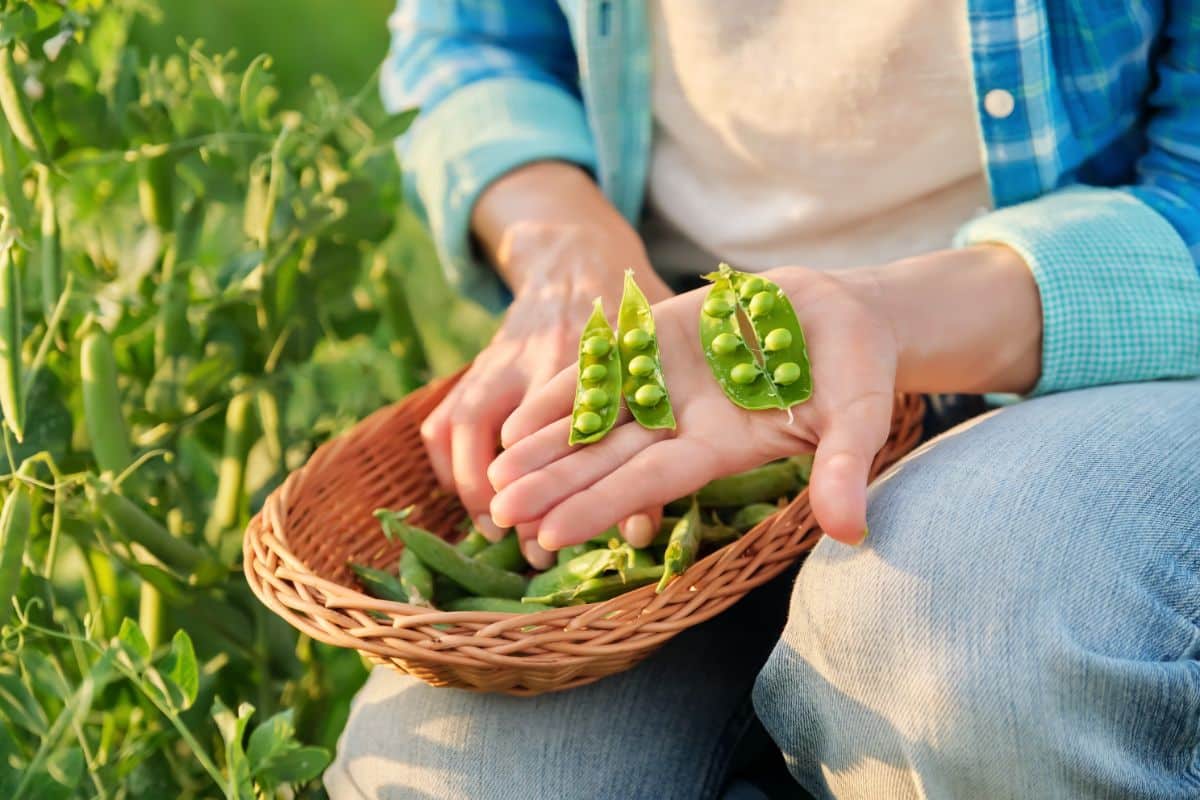
Planning for the entire growing season with succession planting is a surefire way to get a larger harvest out of your garden space. As the saying goes, “nature hates bare soil,” and if you leave garden beds empty after harvesting crops, that space goes to waste, and it can be prone to weeds. However, if you continuously plant edible crops spring through fall, you’ll maximize your garden space and prevent weeds from creeping in.
Depending on your taste, you can succession plant the same crops throughout the season, or you can switch things up and try out different crops in the same area. You can even keep succession planting going throughout the winter by planting cover crops in your garden beds after you pull in your harvest. Once you try this handy gardening technique, the sheer amount of veggies you produce will have you succession sowing again and again!
For more seed-starting tips, check out our full guide here.

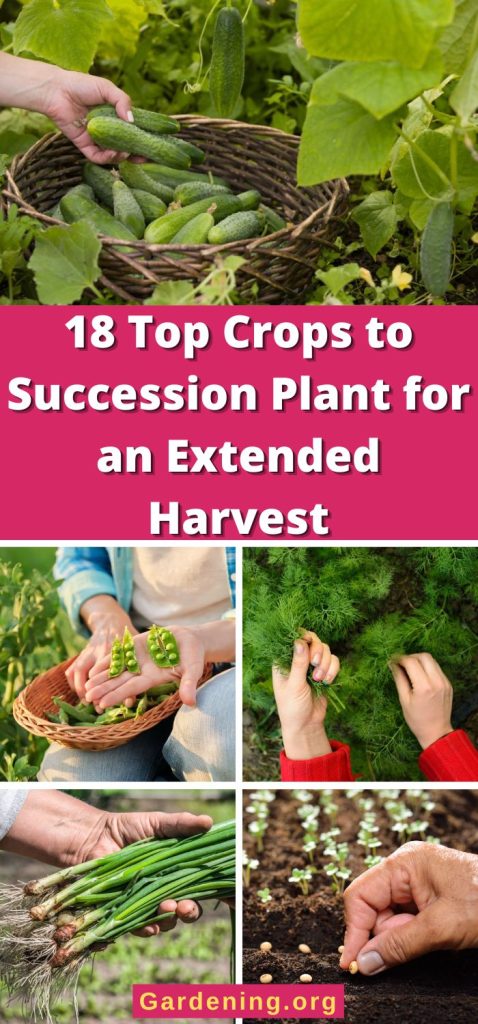
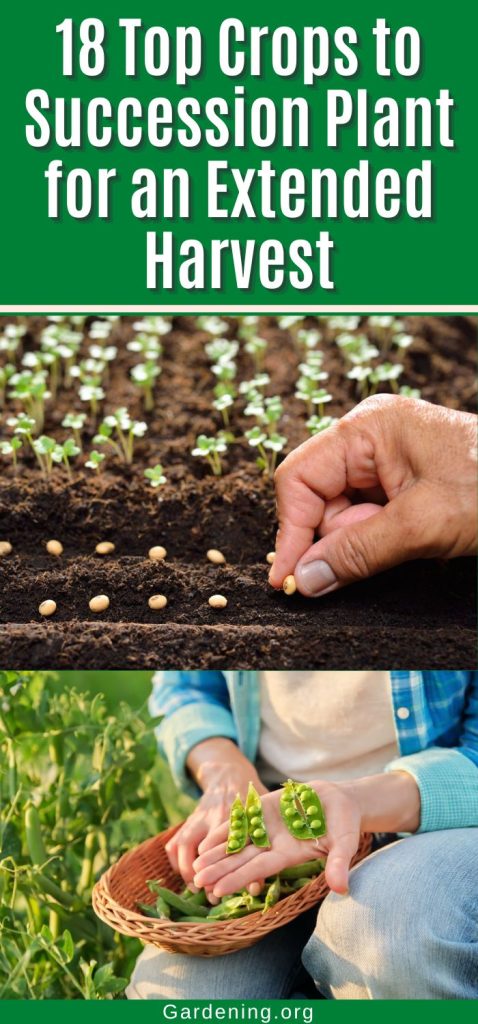
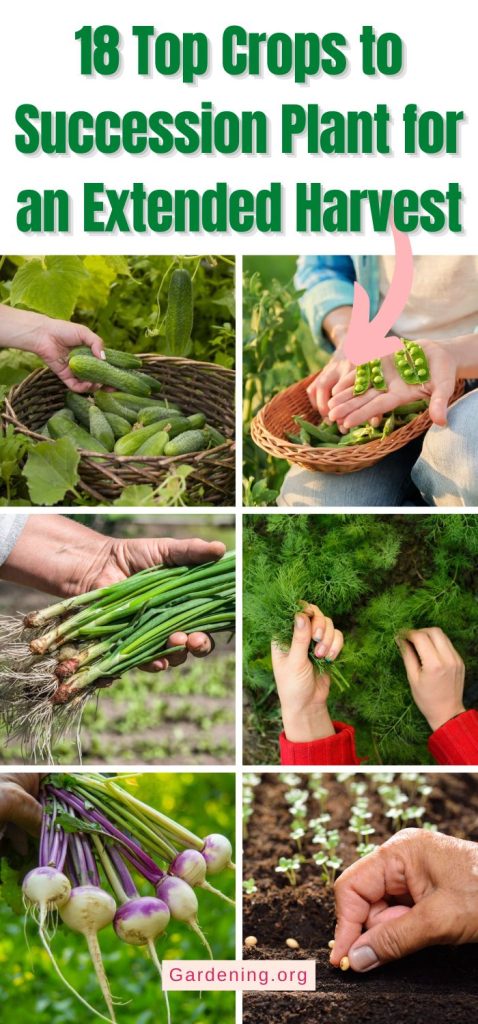
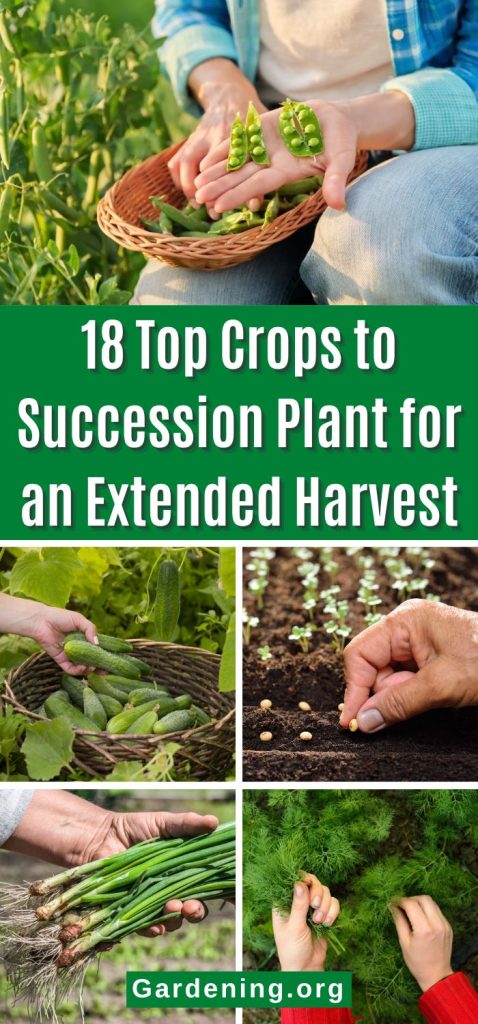
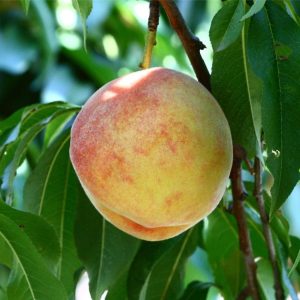
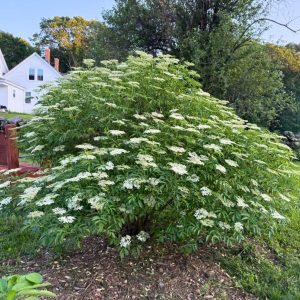
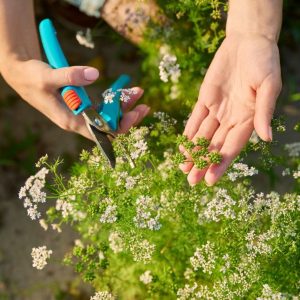
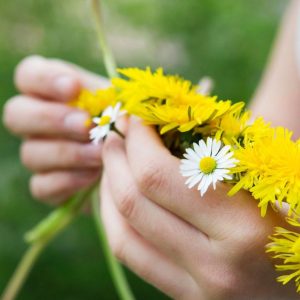
Leave a Reply